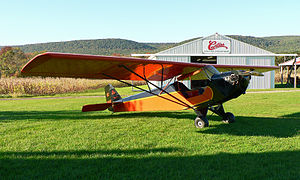
The Curtiss JN "Jenny" is a series of biplanes built by the Glenn Curtiss Aeroplane Company of Hammondsport, New York, later the Curtiss Aeroplane and Motor Company. Although the Curtiss JN series was originally produced as a training aircraft for the US Army, the "Jenny" continued after World War I as a civilian aircraft, becoming the "backbone of American postwar [civil] aviation".

The Avro 504 is a single-engine biplane bomber made by the Avro aircraft company and under licence by others. Production during World War I totalled 8,970 and continued for almost 20 years, making it the most-produced aircraft of any kind that served in any military capacity during the First World War. More than 10,000 were built from 1913 until production ended in 1932.

The Piper J-3 Cub is an American light aircraft that was built between 1938 and 1947 by Piper Aircraft. The aircraft has a simple, lightweight design which gives it good low-speed handling properties and short-field performance. The Cub is Piper Aircraft's second most-produced model after the PA-28 Cherokee series with over 20,000 built in the United States. Its simplicity, affordability and popularity invokes comparisons to the Ford Model T automobile.

The Continental C90 and O-200 are a family of air-cooled, horizontally opposed, four-cylinder, direct-drive aircraft engines of 201 in3 displacement, producing between 90 and 100 horsepower.

The Curtiss Robin, introduced in 1928, is an American high-wing monoplane built by the Curtiss-Robertson Airplane Manufacturing Company. The J-1 version was flown by Wrongway Corrigan who crossed the Atlantic after being refused permission to do so.

The Piper PA-18 Super Cub is a two-seat, single-engine monoplane. Introduced in 1949 by Piper Aircraft, it was developed from the PA-11 Cub Special, and traces its lineage back through the J-3 Cub to the Taylor E-2 Cub of the 1930s. In close to 40 years of production, over 10,000 were built. Super Cubs are commonly found in roles such as bush flying, banner towing and glider towing.
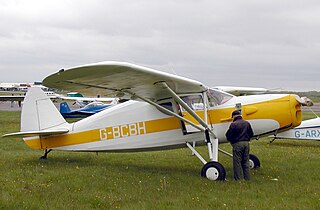
The Fairchild Model 24, also called the Fairchild Model 24 Argus and UC-61 Forwarder, is a four-seat, single-engine monoplane light transport aircraft designed by the Fairchild Aviation Corporation in the 1930s. It was adopted by the United States Army Air Corps as UC-61 and also by the Royal Air Force. The Model 24 was itself a development of previous Fairchild models and became a successful civil and military utility aircraft. It first flew in 1932, and over 2230 would be produced by the time production ended in the late 1940s.
The 1911 Curtiss Model D is an early United States pusher aircraft with the engine and propeller behind the pilot's seat. It was among the first aircraft in the world to be built in any quantity, during an era of trial-and-error development and equally important parallel technical development in internal combustion engine technologies.
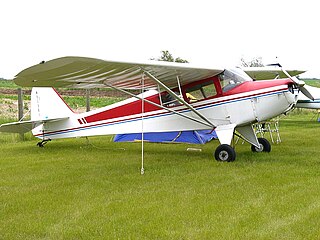
Taylorcraft Aviation is an American airplane manufacturer that has been producing aircraft for more than 70 years in several locations.

The Aeronca L-3 group of observation and liaison aircraft were used by the United States Army Air Corps in World War II. The L-3 series were adapted from Aeronca's pre-war Tandem Trainer and Chief models.
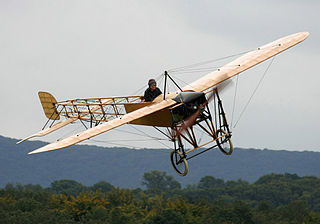
The Blériot XI is a French aircraft from the pioneer era of aviation. The first example was used by Louis Blériot to make the first flight across the English Channel in a heavier-than-air aircraft, on 25 July 1909. This is one of the most famous accomplishments of the pioneer era of aviation, and not only won Blériot a lasting place in history but also assured the future of his aircraft manufacturing business. The event caused a major reappraisal of the importance of aviation; the English newspaper The Daily Express led its story of the flight with the headline "Britain is no longer an Island."
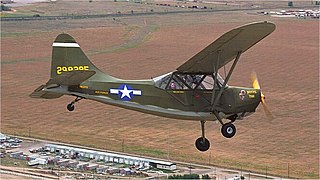
The Stinson L-5 Sentinel is a World War II-era liaison aircraft used by the United States Army Air Forces (USAAF), U.S. Army Ground Forces, U.S. Marine Corps and the British Royal Air Force. It was produced by the Stinson Division of the Vultee Aircraft Company. Along with the Stinson L-1 Vigilant, the L-5 was the only other USAAF liaison aircraft that was exclusively built for military use and had no civilian counterpart.
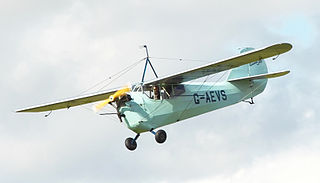
The Aeronca C-3 was a light plane built by the Aeronautical Corporation of America in the United States during the 1930s.

The Culver Cadet is an American two-seat light monoplane aircraft, also as a radio-controlled drone, produced by the Culver Aircraft Company.
The Dakota Territory Air Museum is an aviation museum on North Hill in Minot, North Dakota near Minot International Airport. The mission of the Dakota Territory Air Museum is to be a historical aviation resource honoring the men, women and machines that have impacted the rich history of aviation through displays and events that educate, inspire and entertain people of all ages.
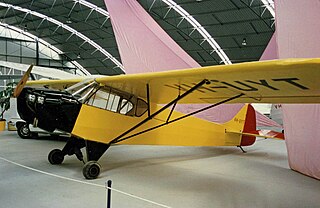
The Taylor J-2 Cub is an American two-seat light aircraft that was designed and built by the Taylor Aircraft Company. The company became the Piper Aircraft Company and the J-2 was first of a long line of related Piper Cub designs.

The Velie Monocoupe was an American general aviation aircraft manufactured from 1927 to 1929 by the Mono-Aircraft Corp, a division of Velie Motors Corporation.

The Alaska Aviation Museum, previously the Alaska Aviation Heritage Museum, is located on Lake Hood Seaplane Base in Anchorage, Alaska. Its mission since 1988, is to preserve, display, and honor Alaska's aviation heritage, by preserving and displaying historic aircraft, artifacts, and memorabilia, and to foster public interest in aviation and its history. The museum has over thirty aircraft on display, a restoration hangar, flight simulators, two theaters, and a Hall of Fame. It provides an emphasis on historic aircraft, aviation artifacts, and memorabilia that contributed to the development and progress of aviation in Alaska, including Bush flying, and the World War II Army base on Adak Island.
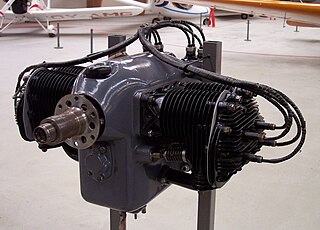
The Continental A40 engine is a carbureted four-cylinder, horizontally opposed, air-cooled aircraft engine that was developed especially for use in light aircraft by Continental Motors. It was produced between 1931 and 1941.

The Arup S-2 was the first commercial development of Cloyd Snyder's Arup S-1 low aspect ratio wing aircraft.
